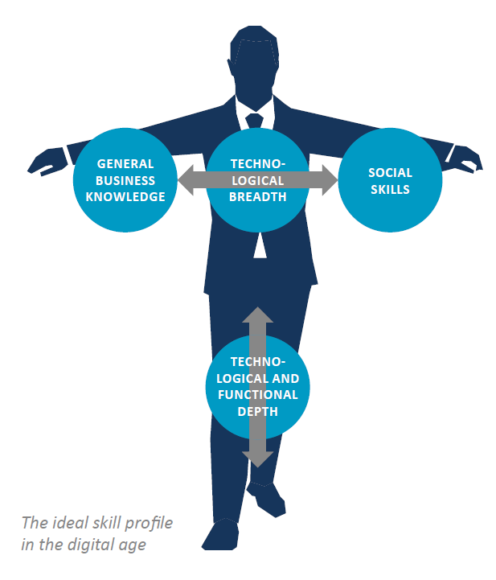People’s emotions are the forgotten part of digitalization. Technology alone won’t decide about your company’s success, but the way you engage with your customers and employees to understand their emotions and to use these for enabling innovation.
This blog article explores the challenges of digitalization for organizations and highlights the importance of emotions – during the digital transformation process and especially as enabler for innovation. It points out what kind of change is needed and how companies can master this forgotten part of digital transformation successfully.
People’s emotions: the forgotten part of digitalization
Organizations are currently facing a legion of issues that include the need to become more global, more lean and more innovative, to manage new and different stakeholders, and to cope with political uncertainty as well as with a lot of other uncontrollable factors. For many organizations, the search for competitive advantage focuses on maximizing performance. The question of how to create and sustain a highly committed workforce is taking on new meaning and urgency. There is no doubt: Digitalization will change the way of working even more drastically than we already feel today. This is particularly true for the collaboration between managers and their employees as well as for the interaction with customers. In a connected, fully digital working environment employees fear the loss of privacy and customers get conscious about data safety. It will be the new normal that employees are connected 24/7, many of them working for more than one company at the same time. Pressure on employees rises while personal interaction decreases. At the same time, the requirements towards the employee skill sets change, and employees are forced to further develop und undergo training programs. Leaders are required to push beyond traditional employee engagement and, moreover, put emphasis on increased collaboration and flexibility of employees.
Digital VUCA World: New requirements towards leadership
In times of volatility, uncertainty, complexity and ambiguity (“VUCA”) managers are forced to prioritize next steps quicker than ever. The speed of action becomes one of the key factors to meet business challenges ahead, such as more demanding customer requirements or stiff competition. To keep up, companies will develop innovation hubs and engage with start-ups to boost their own creativity and innovativeness. Leaders are encouraged to empower their employees to innovate and respond flexibly to emerging business challenges. Due to this ever-changing environment, the frequency of errors will rise and a new culture of trust has to be established. Room for vulnerability and questions has to be granted, and managers have to lead as mentors and coaches using respectful and authentic management styles to prepare their employees for the digital demands. A further challenge will be to keep up employee motivation despite the fears (e.g. of being replaced by machines) and strains due to higher requirements that digitalization may bring about. As a result of these challenges, requirements towards leaders rise become more and more important for the successful digital transformation of an enterprise.
Transparency and value-based leadership
It is surely important to consume as much knowledge as possible, but it is essential to also share that knowledge within the organization. Networking and mind-exchange will help to foster an innovative organizational culture. Knowledge transfer helps to counteract employees´ fears of a future which is perceived to be incalculable, unpredictable and unaccountable. Based on transparency and value-based leadership, trust can be gained again. Employees need to feel assured that they won’t be simply replaced by machines. Therefore, companies need to hire leaders who are authentic and able to decrease people’s uncertainty. Especially in regard to trends like machine learning or ground-breaking innovations in smart robotics, people need to be assured that they are still the most important asset of the company. Social and emotional skills like empathy, interaction, interpretation and the courage to take risky decisions as well as learning from failure are important core skills in a competitive organization. In agile teams, coordination, communication and motivation are essential for success.
Employee engagement: the key differentiating factor
At this point it is already clear that the rise of the global economy and the digital age requires organizational change – often in a disruptive manner. As managing change caused by digital transformation is complex, it can only be executed successfully by engaging employees throughout the entire organization – teams and leaders need to jointly commit themselves to the new target state. While corresponding structures are adjusted to support flexible organization design in line with the needs of the digital age, actual engagement requires the right people with the right skill set. For teams to become more engaged, it requires more than a dedicated leader, it requires fully dedicated team members. Here again, understanding the emotions of the employees is crucial to creating a culture of commitment. Organizations should design working environments that reduce negative emotions and foster personal interaction and individual well-being.
Merging skill profiles: the new war for talent
There is a considerable gap between what organizations need and what the current labor market can offer in terms of digital skills. While companies will surely need new capabilities and resources to manage, coordinate and sustain the execution of digital journeys across the organization, existing employees must also be trained and integrated to tap the whole potential of digitalization. Furthermore, business skills or computational skills alone do not suffice anymore. Managers and analysts need to combine both skill sets to handle the intertwined digital and business aspects. Integrated expertise is considered key and presents a massive gap between the labor market offer and a company’s demand.
Ideal candidates have a T-shaped profile, with the vertical line representing deep knowledge in one specific field and the horizontal line showing the technological breadth combined with general business knowledge and, not to forget, the required social skills. Besides sourcing qualified talents companies will need to set up upskilling programs for the existing workforce.
Support needed?
CAMELOT is experienced in process-oriented organization design as well as in adjusting traditional organization designs towards agile models supporting digital transformation. We help companies to prepare for new challenges by defining the required organizational capabilities, designing the necessary organizational structures and role profiles as well as accompanying the transformation process. Support needed? Do not hesitate to contact us.


